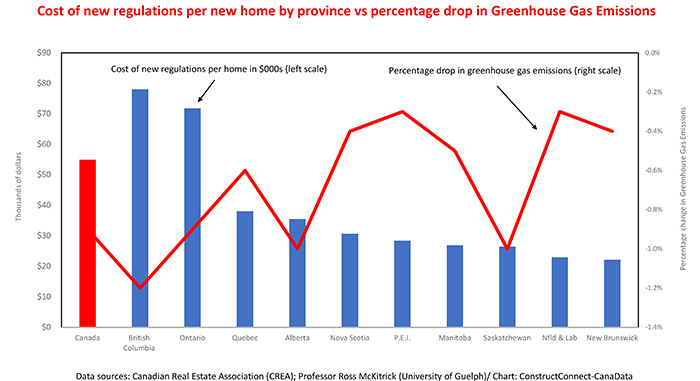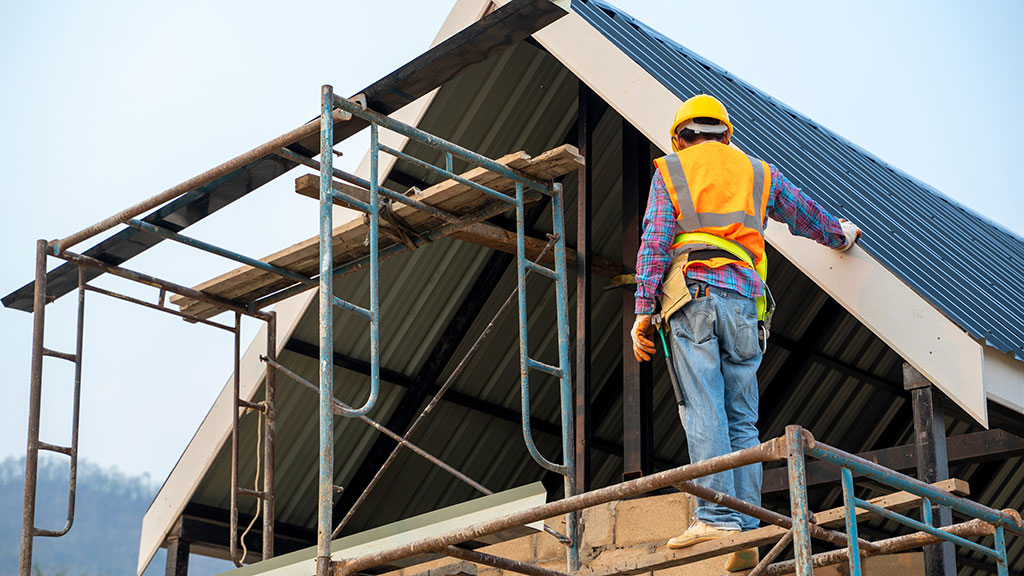In March, 2022, Prime Minister Trudeau announced the country’s 2030 .The purpose of this plan is to enhance the energy efficiency of new and existing residential and commercial buildings by toughening building codes so as to force property owners and contractors to make all new buildings ‘net zero’ by 2050. Toward this end, the government plans to implement the Building Energy Efficiency (BEE) component of the ERP. It will propose new building codes intended to reduce the energy consumption of new residential units by -65% and commercial buildings by -59%.
Estimated cost of ERP is $350 billion
The government published estimated costs of the ERP based on projections provided by the Pembina Institute. To reach net zero (carbon emissions) by 2050, just 27 years from now, it will be necessary to retrofit 11.4 million homes and the equivalent of 32 million square feet of commercial property. The Institute estimates this will cost $21 billion a year, for a total of $357 billion, over the next 17 years. To put this in perspective, in 2022 business investment (residential and non-res) totaled $350 billion.
Heating with electricity greener but pricier than natural gas
While the government highlights the cost of retrofitting the existing stock of residential and non-residential buildings, it does not indicate how much more homeowners and small businesses will have to pay if they switch from heating with natural gas to electricity. According to , “on a pure cost comparison, natural gas at the current Ontario rate is only 1.375 cents/kwh equivalency vs 11.3 cents/kwh for electricity”. Note that the cost of electricity ranges from 25 cents/kwh in Alberta to 7 cents/kwh in the province of Quebec.
Higher construction costs make new homes less affordable
Faced with a critical shortage of affordable housing, the federal government announced its Affordable Housing Plan in mid-September, the purpose of which is to “make it easier for Canadians to find an affordable place to call home.” This objective is appealing, given that average house prices in Canada have, according to the Canadian Real Estate Association, increased by just under 40% over the past five years. Unfortunately, the objective of lowering ownership costs and the soon-to-be-realized rise in housing costs, due to the Building Energy Efficiency initiative, appear to be diametrically opposed.
Building Energy Efficiency will add $55,000 to new house price
This inconsistency was recently highlighted by Professor Ross McKitrick, a professor of economics at the University of Guelph and Senior Fellow at the Fraser Institute who has been actively studying climate change, climate policy, and environmental economics since the mid-1990s. He has just released an analysis of the economic impact of the Emission Reduction Plan titled .�� It reveals that although the initial impact of the BEE on residential construction costs is relatively small, it steadily escalates. By 2030, it will add 8% ($55,000) to the cost of the average new home.
Across the country, the effect of the more restrictive building codes mandated by the BEE will range from a low of $22,144 in New Brunswick to $78,093 in British Columbia. Given that the BEE introduces more restrictive and costly building regulations across the entire country, it will reduce national gross domestic product by an estimated 2% under the base case. Also, by potentially reducing residential building activity, higher house prices could put a damper on construction employment.
Further, because the BEE mainly impacts new construction and does little to the existing housing stock, it will have a marginal impact on greenhouse gas emissions. The revised building codes apply mainly to new homes. Since purchasers of such properties are generally younger with relatively weaker earnings, the new codes will provide a further barrier to lower-income individuals entering the housing market.
��
Expect more restrictive building codes to have high price
On balance, McKitrick’s analysis presents a strong case that the Building Energy Efficiency component of the 2030 Emissions Reduction Plan will, by increasing construction costs, make the shortage of affordable homes in Canada worse than it is today.



Recent Comments
comments for this post are closed